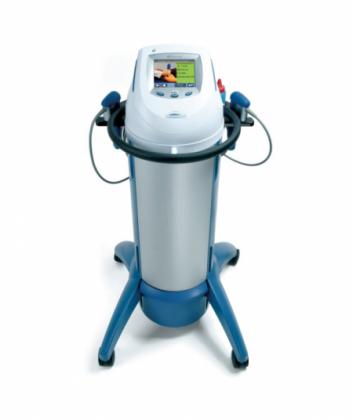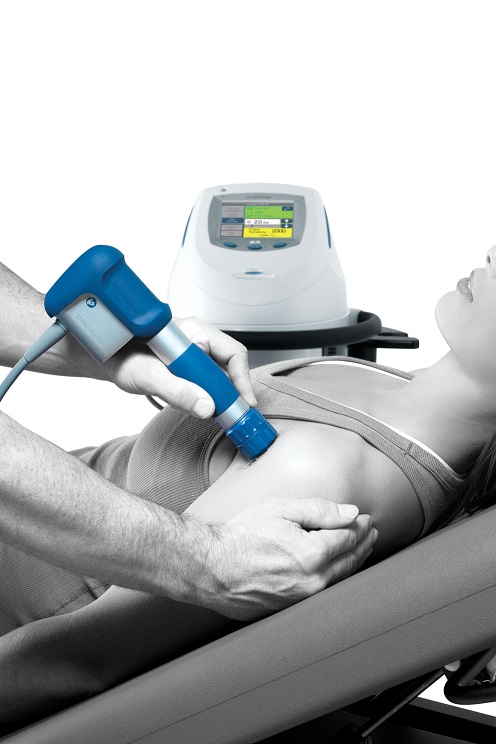Radial Pressure Wave (RPW) Therapy
Osteopathy Works is very excited to offer Radial Pressure Wave (RPW) therapy at our Dunedin and Balclutha Clinics.
RPW therapy is indicated for conditions that are normally very difficult to treat. It is the best last resort if surgery has been suggested. It is extremely beneficial in treating conditions such as:

- Achillodynia (Achilles tendinopathy)
- Plantar Fasciitis/Heel Spur
- Epicondylitis (Tennis elbow, Golfer’s elbow)
- Adhesive Capsulitis (Frozen shoulder)
- Shoulder tendinosis, including calcific tendinitis and rotator cuff tendinosis
- Patellar tendinitis (Jumpers knee)
- Shin Splints / Tibial stress syndrome
- Patellofemoral pain syndrome (Runner’s knee)
- Trochanteric bursitis
- Tibialis Posterior Tendonitis / dysfunction
- Tibialis Anterior Tendonitis / dysfunction
- Peroneal Tendonitis / dysfunction
- Osgood–Schlatter disease
- Sever’s disease/disorder (Calcaneal apophysitis)
- Morton’s neuroma (Metatarsalgia)
- Dupuytren's contracture (Palmar fibromatosis)
- De Quervain’s tenosynovitis of thumb
- Pain, adherence of scar tissue
- Muscle trigger points
And as RPW therapy encourages bone healing, it has been used to help treat:
- Stress Fractures
- Avascular Necrosis (A dead portion of bone)
- Slow-healing bone (Delayed unions)
- Non-healing bone (Non-unions)
Radial Pressure Wave Therapy – How does it work, and what are the advantages?
 Therapeutic shockwaves were introduced as a medical treatment for eliminating kidney stones without causing skin injury, over 20 years ago. Some of the side effects discovered while using this treatment were accelerated tissue healing and bone healing throughout the areas submitted to shockwave treatment.
Therapeutic shockwaves were introduced as a medical treatment for eliminating kidney stones without causing skin injury, over 20 years ago. Some of the side effects discovered while using this treatment were accelerated tissue healing and bone healing throughout the areas submitted to shockwave treatment. - A shockwave is generated in the hand piece
- The shockwave is delivered to the tissue via a compressed air impulse exerted by the hand piece
- The shockwave radiates out, extending to the entire area where pain occurs
- Usually no more than 3-4 sessions are needed
- No anaesthetic is required
- No surgery or other therapy is required and treatment can usually start straight away
- Few complications
- Virtually painless after treatment
- Quick recovery and quick results
“RPW offers two main advantages over traditional surgical methods, fewer potential complications and a faster return to normal activity”. FDA
Physical effects of radial pressure waves include:
- Pain reduction. The patient experiences a reduction of pain, explained by the Gate Control Theory. Intensive pulses from the transmitter into the tissue, create a strong anaesthetic effect on the nerve fibres, which inhibits the transmission of pain signals.
- Increased metabolism. Shockwaves influence the tissue on a cellular level. The chemical environment of the cells is affected by free radicals promoting the release of pain and inflammatory inhibiting substances.
- Revascularisation. Repeated Shockwaves to the affected area create a revascularisation effect, with the new blood flow in the area promoting tissue healing and regeneration.
- Reduced muscle tone. The ‘vicious circle’ as well as the strong pathological association between pain and muscle tone, will be broken and lead to restoring a normalised muscular tone.
In some cases RPW therapy has been shown to be more effective than three months of traditional rehabilitation.
How many treatments will I need?
Usually three to six treatments conducted weekly.
How much does it cost?
Cost: $50 surcharge on top of treatment cost.





 Join us on Facebook
Join us on Facebook